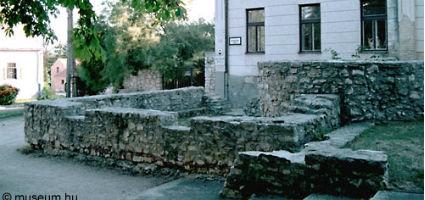2024. November 23. Saturday
AlbeWass Library and Museum - Tapolca
 |
Address: 8300, Tapolca Batsányi utca 1.
Phone number: (87) 412-246
E-mail: konytar@vk.tapolca.hu
Opening hours: 01.06-01.09.: Tue-Sun 10-17
02.09-31.05.: Tue-Fri 10-16 |
Museum tickets, service costs:
|
Group ticket
(over 10 people)
|
150 HUF
|
/ capita
|
|
Ticket for adults
|
500 HUF
|
|
|
Ticket for students
|
250 HUF
|
|
|
Ticket for pensioners
|
300 HUF
|
During the Middle Ages there had been school education in the town. The first school was possibly built on the Church hill. In the 14th and 15th centuries several Tapolcan students got in to the European universities.
After 1541, however, devastating Turkish raids were made against the town and its vicinity. The school ceased to operate some time before 1550. A castle was built on the church hill and wars lasting for about 150 years were started.
After the chaing out of the Turks the town and its vicinity slawly began to develop. In 1726 there was a new teacher working together with the choir-master. The first teacher known by name was the noble András Csutor (1739). The school building (the current museum) was also built at this time in the bottom of the ruinous stronghold.
In 1813 large renovation works were carried out in the building. Regarding this age it is to be noted that the prominent poet of the Hungarian enlightenment, János Batsányi was also studying at this school.
Students were taught here till 1884. After that time it was exclusevily served as a dwelling place for the choir-master (up the time of the second world war).
Entering the main entrance we will first get to the round corridor. Two bare feet represent the poverty and the poor clothes worn by the students.
Then follows the classroom. Here we can find everything used by a choir-master in the lessons: maps, coloured wall pictures, arithmetic interpretive panels, harmonium, tinkle, class-book, and the often used nut-tree rod.
In the third exhibition room we can see the room of the choir-master. In the fourth room all kinds of demonstrating devices, books, projectors, etc. are exhibited.
(text: László Hangodi teacher, historian)
After 1541, however, devastating Turkish raids were made against the town and its vicinity. The school ceased to operate some time before 1550. A castle was built on the church hill and wars lasting for about 150 years were started.
After the chaing out of the Turks the town and its vicinity slawly began to develop. In 1726 there was a new teacher working together with the choir-master. The first teacher known by name was the noble András Csutor (1739). The school building (the current museum) was also built at this time in the bottom of the ruinous stronghold.
In 1813 large renovation works were carried out in the building. Regarding this age it is to be noted that the prominent poet of the Hungarian enlightenment, János Batsányi was also studying at this school.
Students were taught here till 1884. After that time it was exclusevily served as a dwelling place for the choir-master (up the time of the second world war).
Entering the main entrance we will first get to the round corridor. Two bare feet represent the poverty and the poor clothes worn by the students.
Then follows the classroom. Here we can find everything used by a choir-master in the lessons: maps, coloured wall pictures, arithmetic interpretive panels, harmonium, tinkle, class-book, and the often used nut-tree rod.
In the third exhibition room we can see the room of the choir-master. In the fourth room all kinds of demonstrating devices, books, projectors, etc. are exhibited.
(text: László Hangodi teacher, historian)